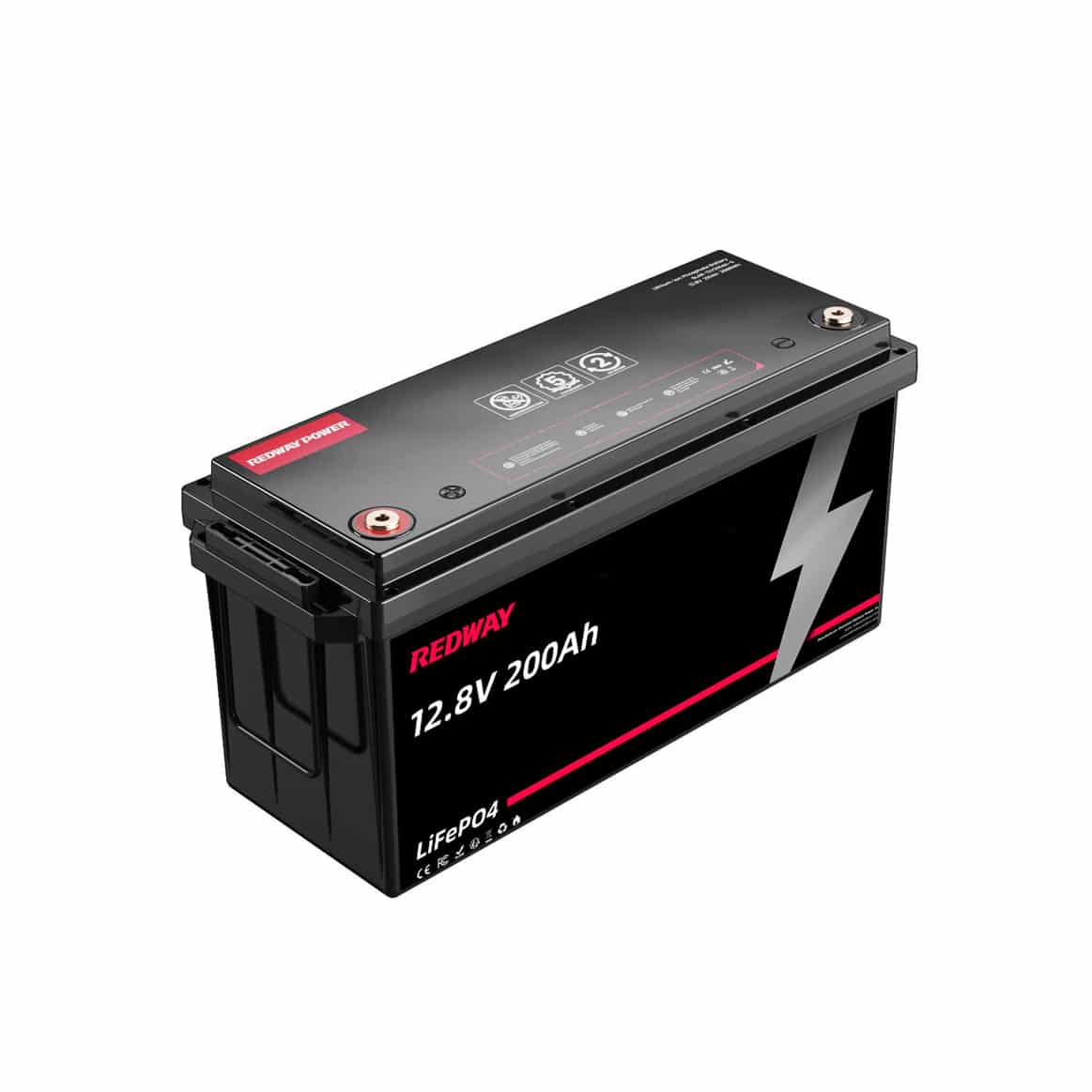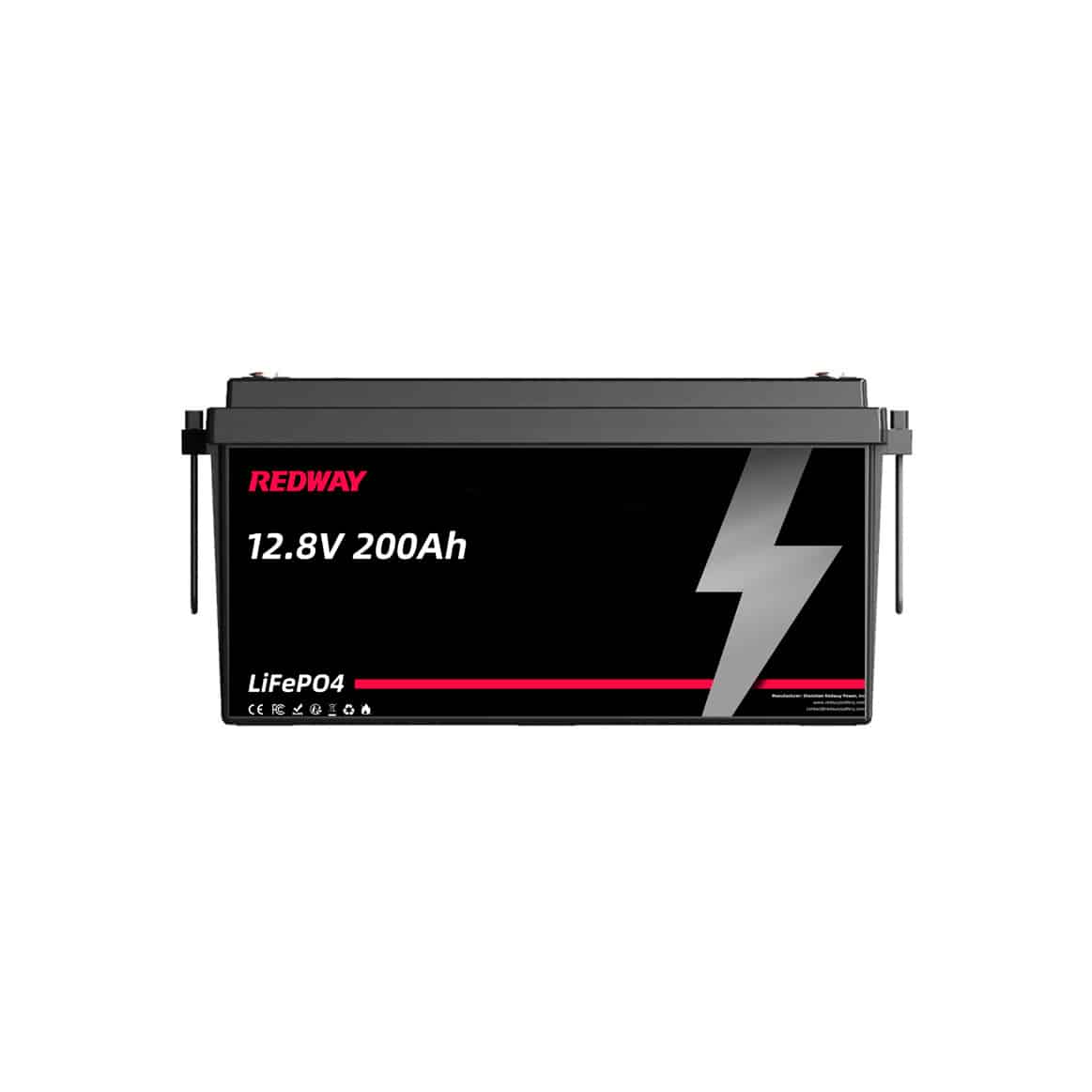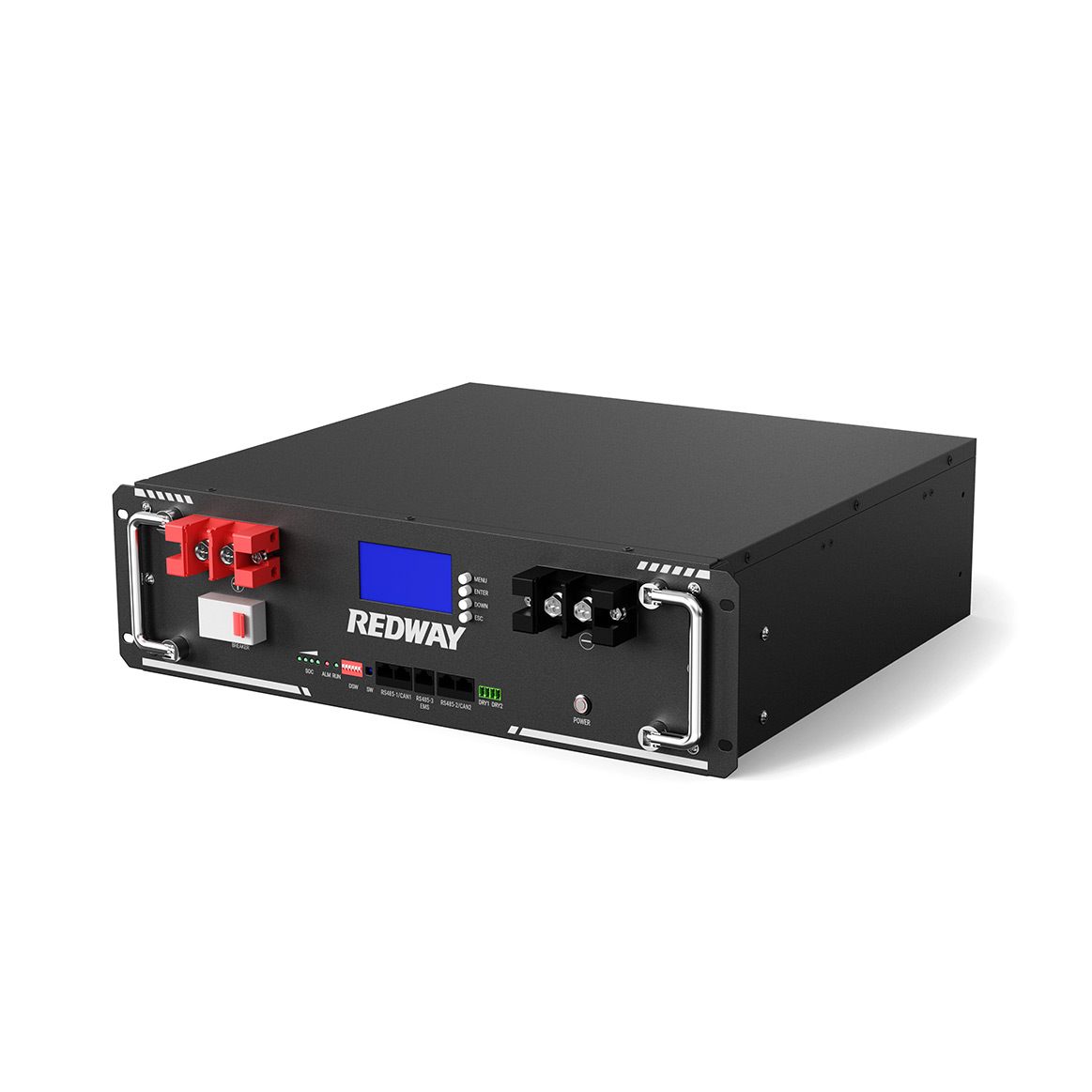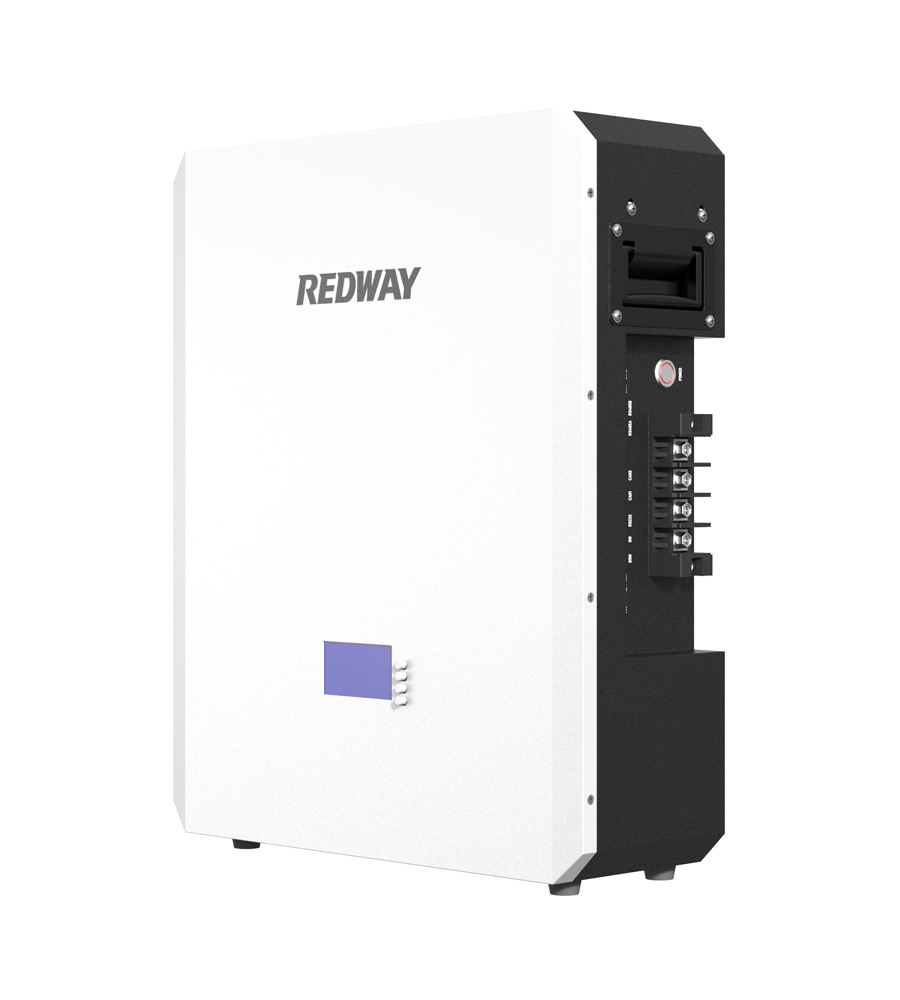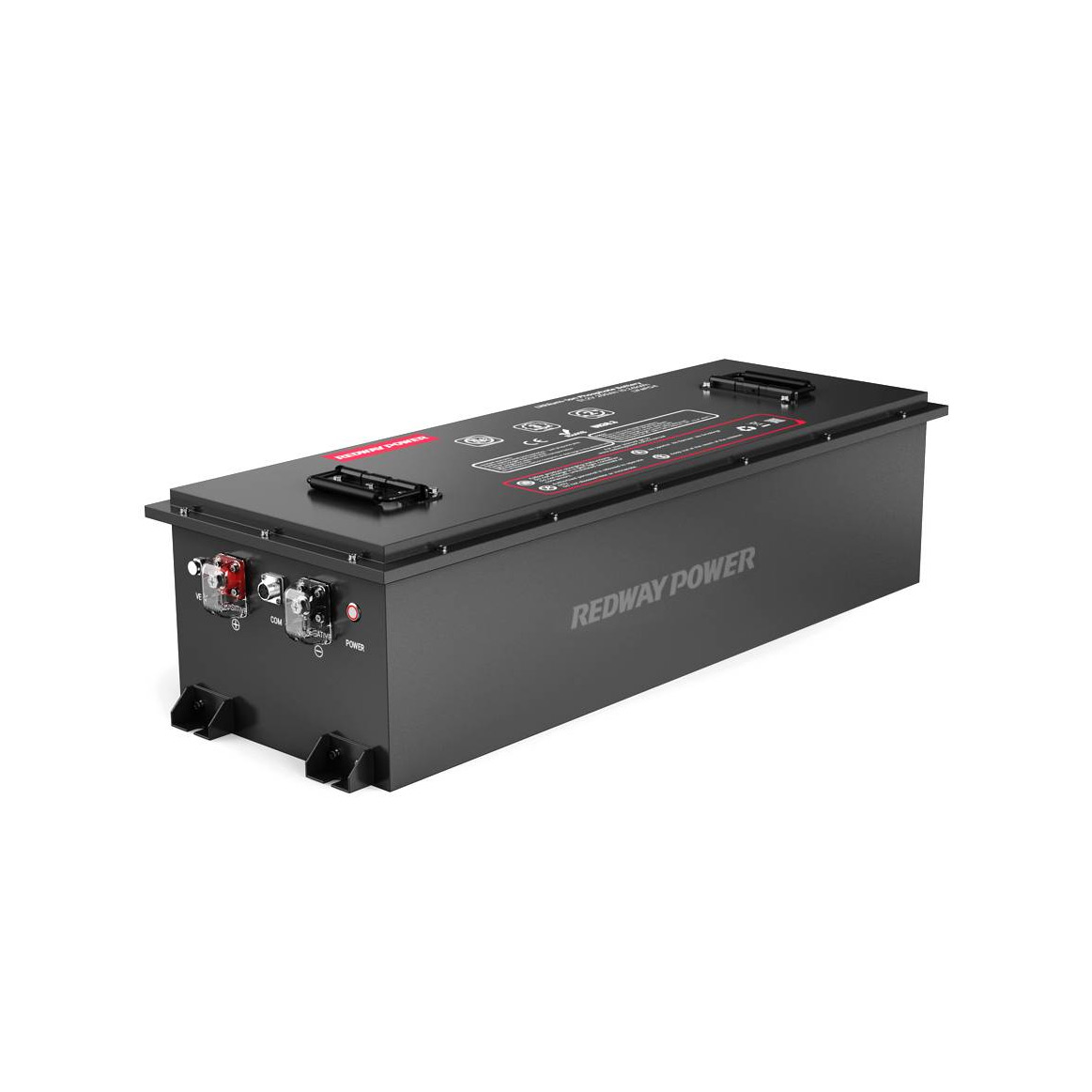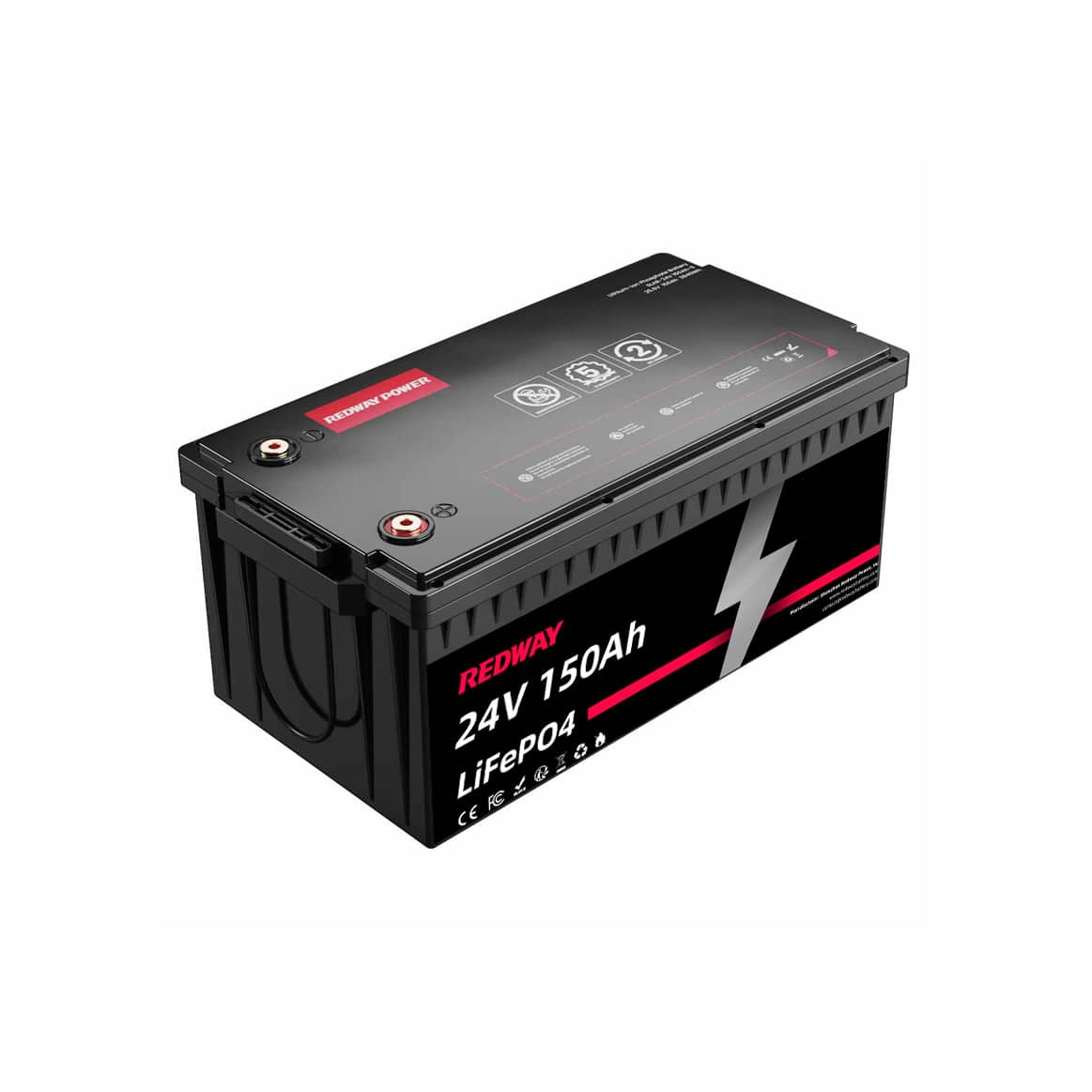Description
The Redway 12V 200Ah Lithium Battery offers a powerful, efficient solution for a wide range of energy storage needs. Utilizing cutting-edge LiFePO4 (Lithium Iron Phosphate) technology, this battery combines safety, durability, and long life, making it perfect for solar power systems, RVs, marine use, and backup power applications.
With a nominal voltage of 12.8V and a capacity of 200Ah, it delivers a reliable 2560Wh (2.56 kWh) energy output. It supports continuous charge and discharge currents up to 100A, ensuring steady performance under various load conditions. The compact design, weighing only 18 kg (39.7 lbs) and housed in a robust IP65-rated ABS shell, guarantees protection from dust and water, ideal for harsh environments.
Equipped with an advanced JBD/DALY Battery Management System (BMS), the Redway battery ensures safe operation by protecting against overcharge, overheating, and short circuits. It operates efficiently across a wide temperature range, from 0°C to 60°C for charging and -20°C to 65°C for discharging.
This battery supports up to 6 units in parallel, allowing scalable capacity to match diverse energy requirements. Optional upgrades include Bluetooth monitoring, GPS tracking, self-heating, and LCD displays for enhanced functionality. Certified to global safety standards like UL1642, IEC62619, CE, and UN38.3, the Redway 12V 200Ah Lithium Battery is a trusted choice for long-lasting, safe, and efficient power.
Know More
Why Choose a 12V 200Ah B2B LiFePO4 Lithium Battery for Wholesale and OEM Projects?
A 12V 200Ah LiFePO4 lithium battery offers high energy density, long cycle life, and robust safety for solar, marine, RV, and industrial backup. Redway Battery stands out with advanced BMS, global certifications, and custom OEM/ODM solutions—making it the top choice for B2B, wholesale, and demanding power applications worldwide.
What are the essential features of a 12V 200Ah LiFePO4 lithium battery for B2B?
A 12V 200Ah LiFePO4 battery delivers 2.5–2.6kWh per unit, with over 6000 cycles, 95% energy efficiency, and a lightweight, compact design. Built with Grade A+ cells, it features a smart BMS for protection and can be customized for voltage, capacity, dimensions, and communication protocols. Redway Battery’s models are certified to UL, CE, UN38.3, and IEC standards.
Chart: 12V 200Ah LiFePO4 Battery Key Specifications
| Feature |
Value |
| Nominal Voltage |
12.8V |
| Capacity |
200Ah |
| Energy |
2.56kWh |
| Cycle Life |
6000+ |
| Weight |
22–24kg |
| Dimensions |
466–582mm × 195–260mm × 192–275mm |
| BMS |
Smart (100A/200A) |
| Waterproof |
IP65–IP67 |
| Certifications |
UL, CE, UN38.3, IEC |
| Warranty |
5–10 years |
How does a 12V 200Ah LiFePO4 battery compare to lead-acid and other lithium chemistries?
LiFePO4 batteries offer 4–10 times the cycle life of lead-acid, up to 40% lighter weight, and maintain 80%+ capacity after thousands of cycles. Compared to NMC or LCO, LiFePO4 is safer and more thermally stable. Redway Battery’s OEM solutions outperform traditional batteries in efficiency, lifespan, and environmental impact.
Why is a smart BMS critical for 12V 200Ah LiFePO4 batteries in B2B applications?
A smart BMS ensures cell balancing, prevents overcharge/discharge, and protects against overheating and short circuits. For B2B and OEM buyers, Redway Battery’s advanced BMS options support Bluetooth, CAN, and RS485 protocols, enabling real-time monitoring, remote diagnostics, and seamless integration with modern energy systems.
What applications are ideal for a 12V 200Ah LiFePO4 lithium battery?
These batteries power solar energy storage, marine systems, RVs, backup UPS, telecom, and industrial equipment. Their high energy density, long cycle life, and rugged build make them suitable for both mobile and stationary B2B deployments, including harsh environments and off-grid projects.
How customizable and scalable are 12V 200Ah LiFePO4 batteries for OEM/ODM buyers?
Redway Battery offers full OEM/ODM customization—capacity, voltage, BMS features, shell material, and communication protocols can be tailored. MOQ starts at 10–50 units, with delivery in 20 days. Batteries can be paralleled or connected in series for larger systems, supporting rapid scaling for wholesale and project needs.
What are the quality and safety certifications for 12V 200Ah LiFePO4 batteries?
Redway Battery’s products are certified to UL, CE, UN38.3, IEC, and ISO9001 standards, ensuring safe transport, installation, and operation worldwide. Rigorous QC and IP65/IP67 options add dust and water protection for harsh environments, guaranteeing long-term reliability.
Chart: Certifications and Standards
| Certification |
Coverage |
| UL |
Cell/Battery Safety |
| CE |
European Safety/EMC |
| UN38.3 |
Lithium Transport |
| IEC |
Battery Safety |
| ISO9001 |
Factory Quality |
How do OEM factories like Redway Battery support B2B and wholesale buyers?
Redway Battery provides dedicated engineering support, fast prototyping, and flexible pricing. Their Dongguan factory offers quick turnaround, global shipping (FOB, EXW, CIF), and payment options (T/T, L/C, PayPal). Technical support and after-sales service ensure smooth integration and long-term satisfaction.
What is the price range and delivery time for wholesale 12V 200Ah LiFePO4 batteries?
Bulk pricing ranges from $350 to $700 per unit, depending on quantity and customization. Redway Battery’s MOQ is 10–50 units, with typical delivery in 20 days. Discounts are available for large orders, and shipping options include sea, air, and land for global reach.
Can 12V 200Ah LiFePO4 batteries be integrated with smart monitoring and IoT systems?
Yes, Redway Battery’s OEM solutions support Bluetooth, WiFi, CAN, and RS485 for remote monitoring and IoT integration. Optional LCD/LED displays and app connectivity enable real-time diagnostics, predictive maintenance, and remote management—ideal for advanced solar, marine, and industrial deployments.
Redway Battery Expert Views
“Redway Battery’s 12V 200Ah LiFePO4 batteries are engineered for performance, safety, and adaptability. Our OEM/ODM services empower B2B clients to innovate in solar, marine, and energy storage. With advanced BMS, global certifications, and rapid delivery, we ensure every project achieves maximum reliability and efficiency.”
Conclusion
A 12V 200Ah LiFePO4 lithium battery from an OEM factory like Redway Battery offers unmatched safety, longevity, and flexibility for B2B and wholesale applications. With advanced BMS, global certifications, and custom engineering, these batteries drive innovation in solar, marine, and backup power—delivering reliable, scalable, and future-proof energy solutions.
FAQs
What is the cycle life of a 12V 200Ah LiFePO4 battery?
Most deliver 6000+ cycles at 80% DOD, lasting 10 years or more in typical use.
Can I customize the battery for my application?
Yes, Redway Battery offers OEM/ODM customization for voltage, capacity, BMS, and communication protocols.
What certifications do these batteries have?
UL, CE, UN38.3, IEC, and ISO9001 ensure global safety and quality compliance.
What is the MOQ and delivery time for wholesale orders?
MOQ is 10–50 units, with delivery in 20 days and global shipping options.
Are these batteries compatible with solar and marine systems?
Absolutely, they integrate seamlessly with solar inverters, marine electronics, and industrial equipment.

